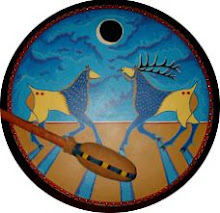Vecchio Campionario di perline per il commercio
Il 12 Ottobre 1492 Cristoforo Colombo registra nel suo diario di bordo che ai nativi di San Salvador "sono stati dati cappelli rossi e perline di vetro". Questa è la più antica registrazione relative alle perline di vetro in America. L'esploratore Spagnolo Hernando Cortés sbarcò sulle coste del Messico nella primavera del 1519. La sua nave trasportava perline di vetro insieme ad altri prodotti europei per il commercio. Gli esploratori spagnoli Narvaéz nel 1527 e De Soto nel 1539 trasportavano perline di vetro per commerciare con i nativi abitanti della Florida. Nel 1622 una fabbrica per la lavorazione del vetro fu costruita vicino Jamestown, Virginia. Meno di un anno dopo, una spedizione di nativi bruciò la fabbrica. Pochissime delle perline realizzate nella fabbrica di Jamestown sono ancora esistenti. I primi conquistatori spagnoli e i primi preti viaggiarono dalle Florida Keys alla California. Nel 1741, i russi raggiunsero le coste dell'Alaska e da lì scesero giù lungo la costa ovest dell'America. Un commerciante della North Western Company, Alexander Mackenzie, attraversò il Canada fino all'Oceano Pacifico, nel 1793. Tutti questi esploratori, come anche David Thompson e la spedizione di Lewis e Clark, trasportavano perline di vetro come regali e come mezzo di scambio con i Nativi Americani. Il prezzo delle perline variava con i luoghi, la richiesta, e con quanto intensamente i nativi volessero un particolare tipo delle stesse. Durante il commercio delle pellicce di castoro, la Hudson's Bay Company, compagnia importantissima per la stessa storia dell'America del Nord, usava un valore standard basato su una pelliccia finita, una pelliccia cioè stirata sul telaio, asgiugata e pronta per la spedizione. I libri contabili dei più antichi Trading Post registrano che una pelliccia di castoro era scambiata per sei perline Hudson's Bay, tre Padre beads turchesi e due perline grandi blu trasparente. Altre piccole informazioni storiche si ricavano dai reperti di trade beads trovati nei siti archeologici. La Hudson's Bay ha superato tre secoli di attività in Nord America ma i registri sulle tipologie e le descrizioni delle trade beads non sono sopravvissuti nei suoi archivi.
------------------------------------------
October 12, 1492, Columbus recorded in his logbook the natives of San Salvador Island were given red caps and glass beads. This is the earliest written record of glass beads in the Americas. The Spanish explorer Hernando Cortéz landed on the coast of Mexico in the spring of 1519. His ships carried glass beads along with other European trade goods. The Spanish explorers Narváez in 1527 and De Soto in 1539 carried glass beads for trade with the native inhabitants of Florida. In 1622, a glass factory was built near Jamestown, Virginia. Less than a year later, a raiding party of Indians burned the factory. Very few of the beads made in the Jamestown factory are believed to exist today. Early Spanish Conquistadors and Priests traveled from the Florida Keys to California. In 1741, the Russians reached the coast of Alaska and from there down the western coast of North America. A North West Company trader, Alexander Mackenzie, crossed Canada to the Pacific Ocean in 1793. All of these explorers, as well as David Thompson and the Lewis and Clark Expedition, carried glass beads for presents and as a medium of exchange in dealing with the American Indians. Bead prices varied with location, demand, and how bad Indians wanted a particular bead. When trading for beaver pelts, the Hudson's Bay Company used a standard value based on made beaver...a made beaver was stretched, dried, and ready for shipment. Records from early trading posts show a made beaver was worth: six Hudson's Bay beads; three light blue Padre (Crow) beads; two larger transparent blue beads. Little historical information is available on the majority of trade beads discovered in archeological sites. The Hudson's Bay Company has celebrated over three hundred years in North America, but the records on types and descriptions of trade beads, along with invoices, and sources of supply have not survived in the Hudson's Bay archives.
A seguire alcune perline seme Veneziane di fine '800 dono dell'amica e maestra Angela Swedberg















